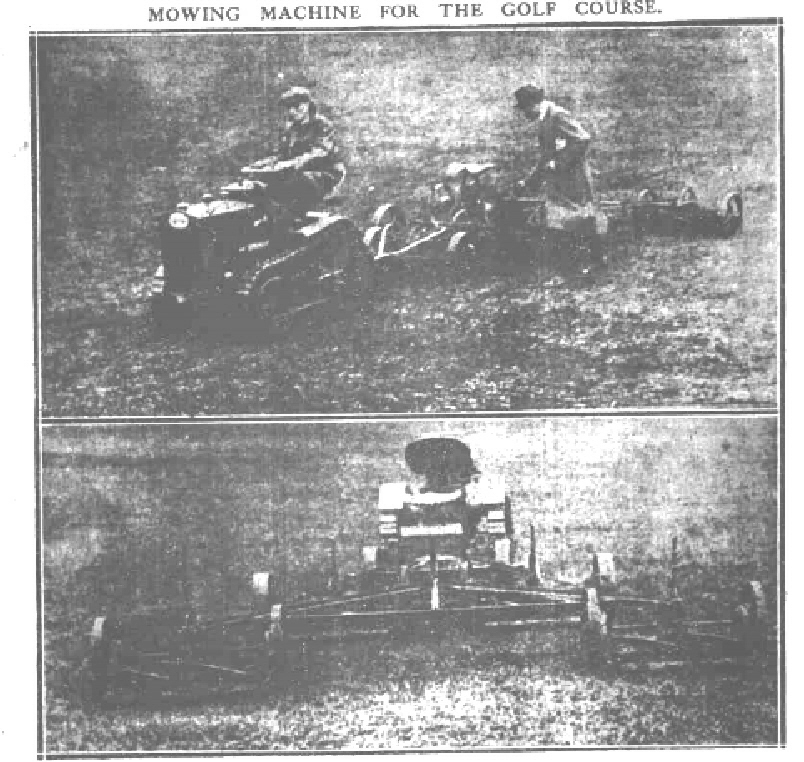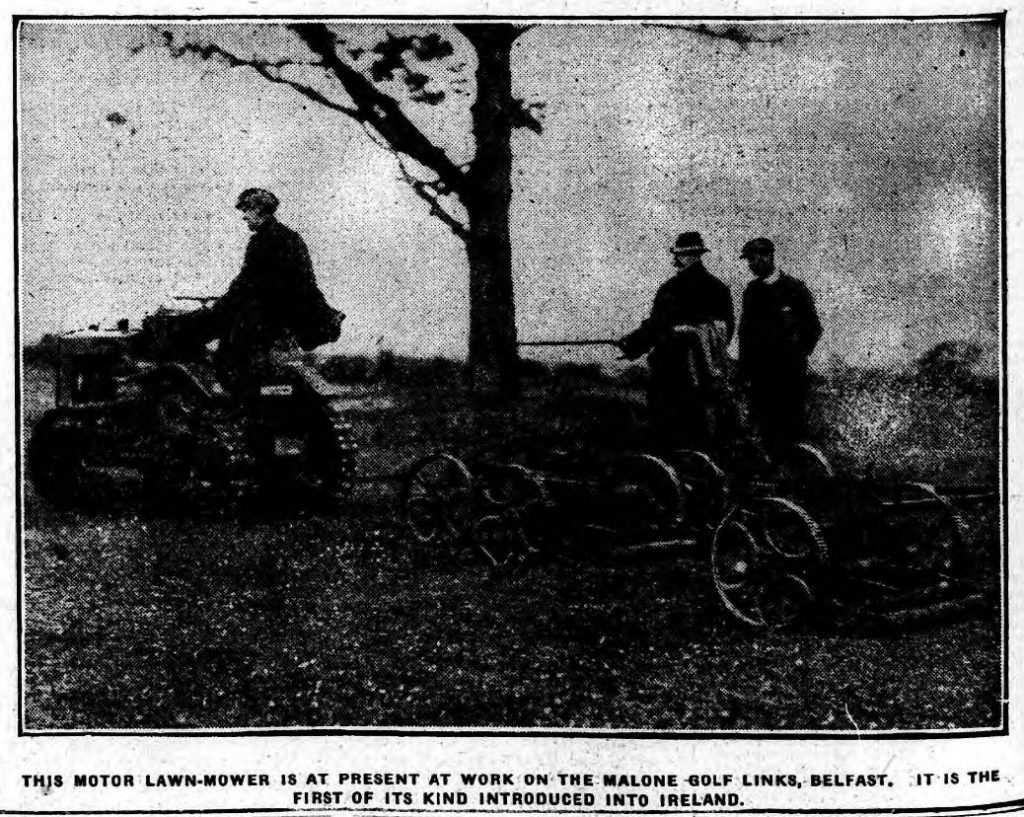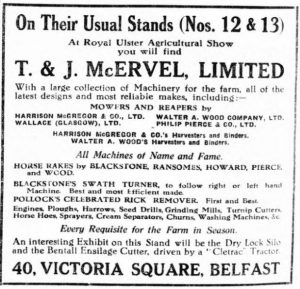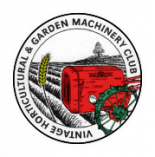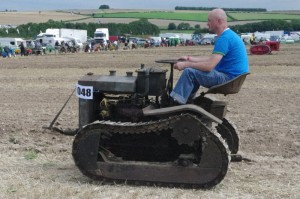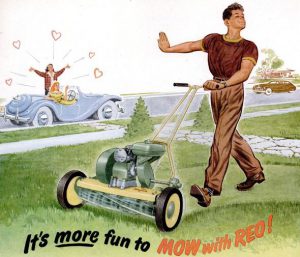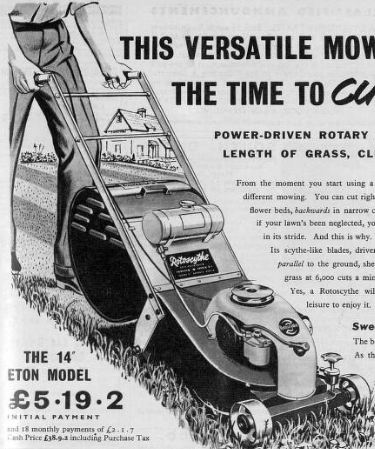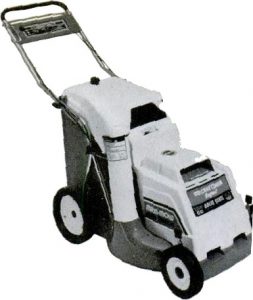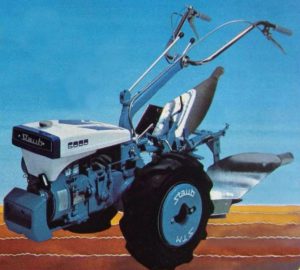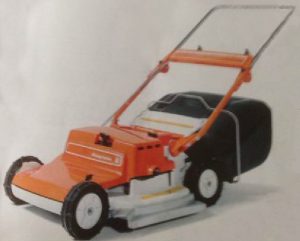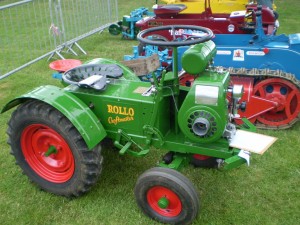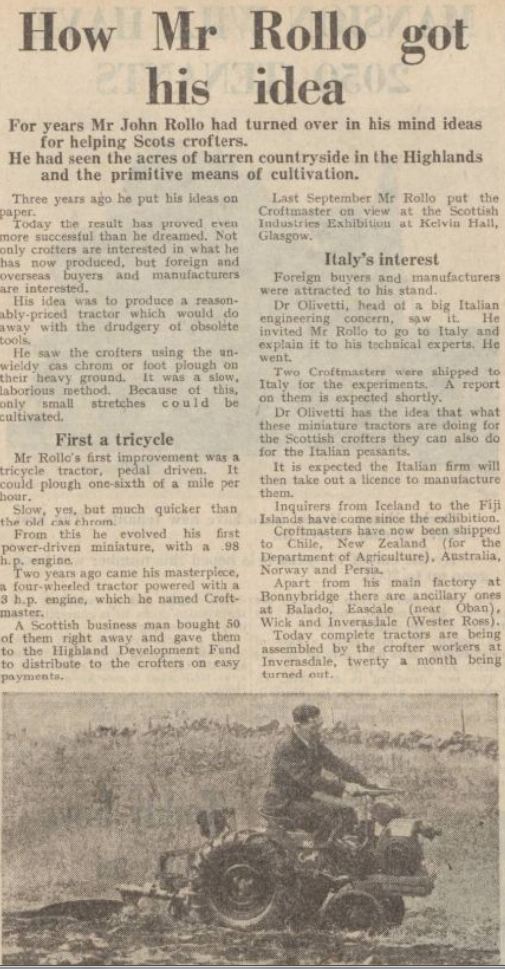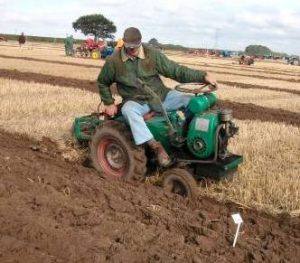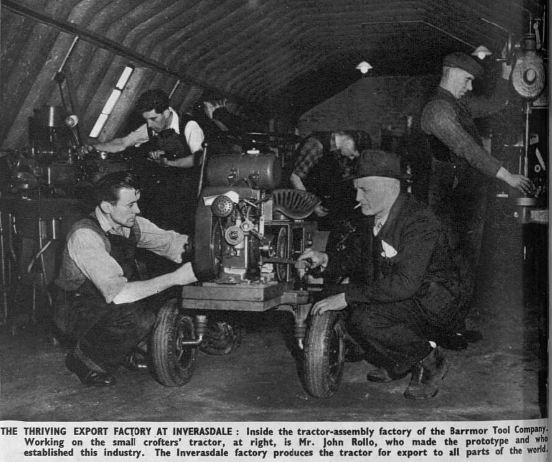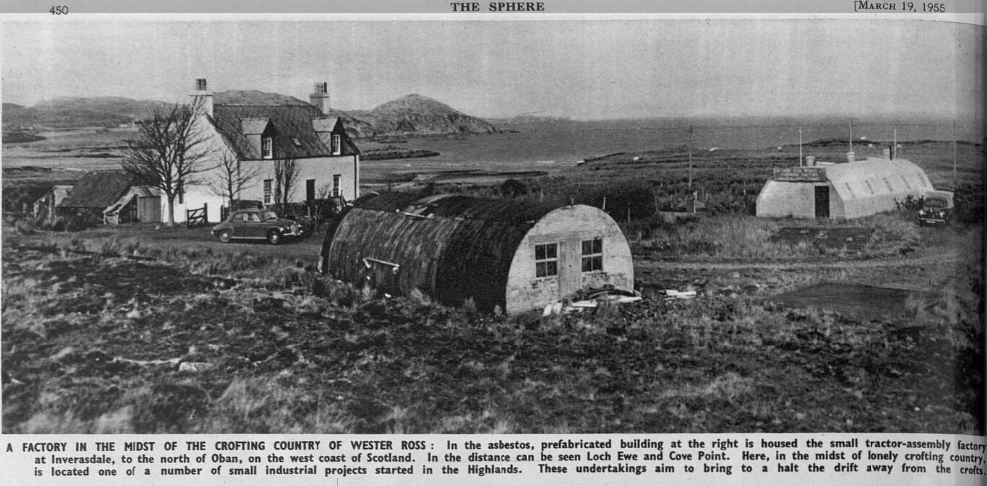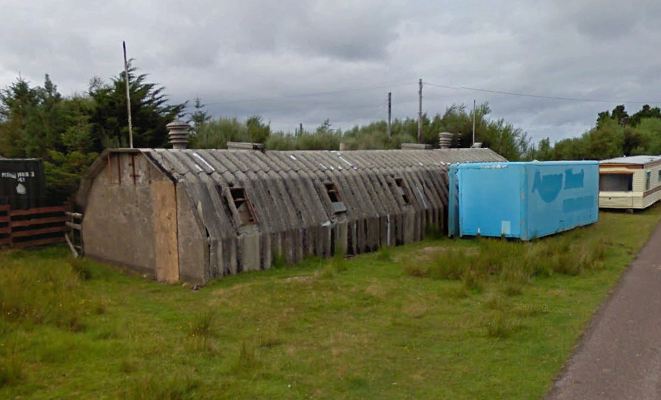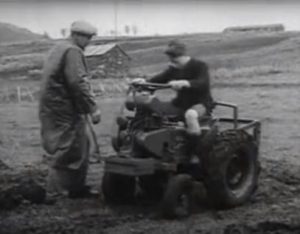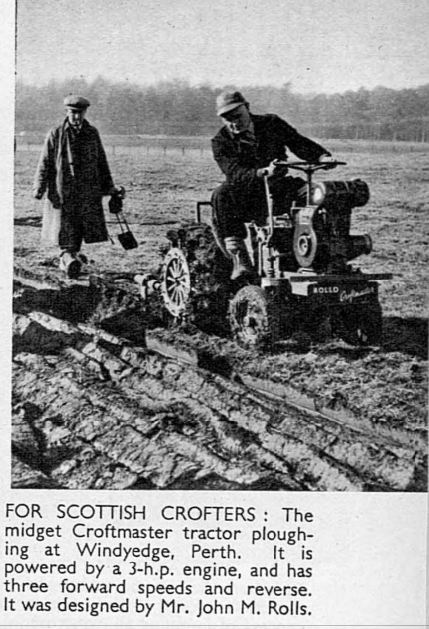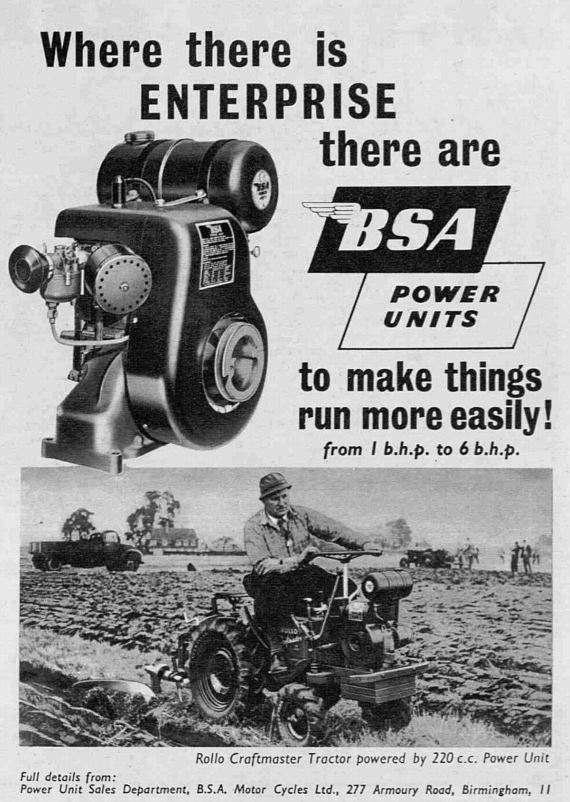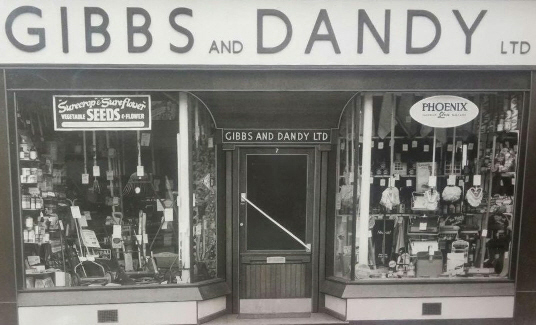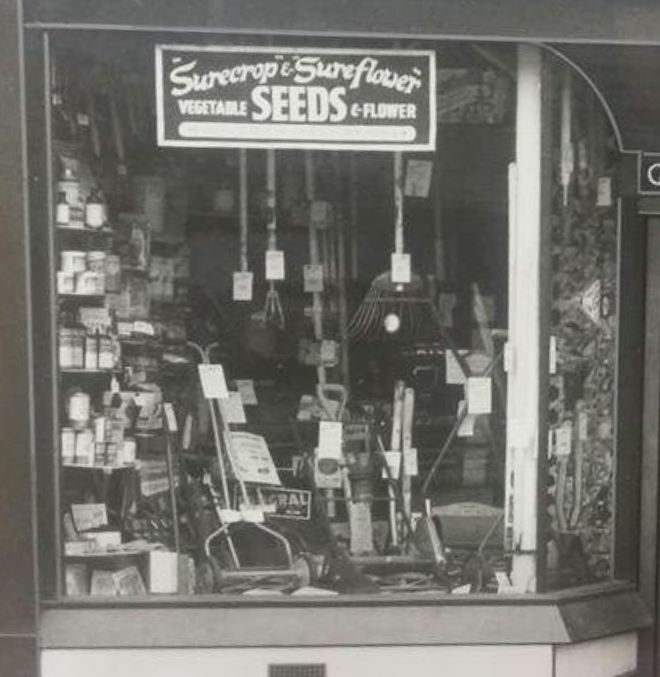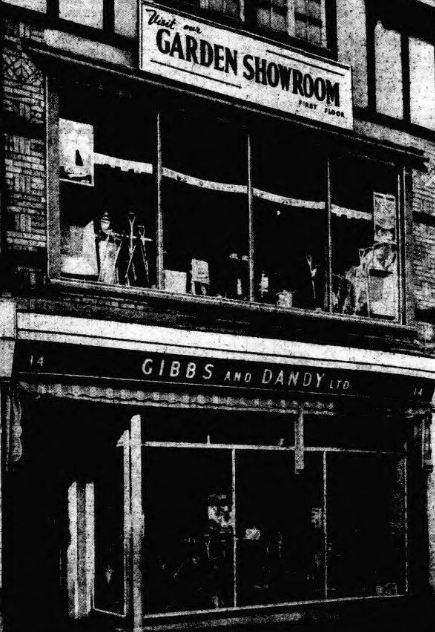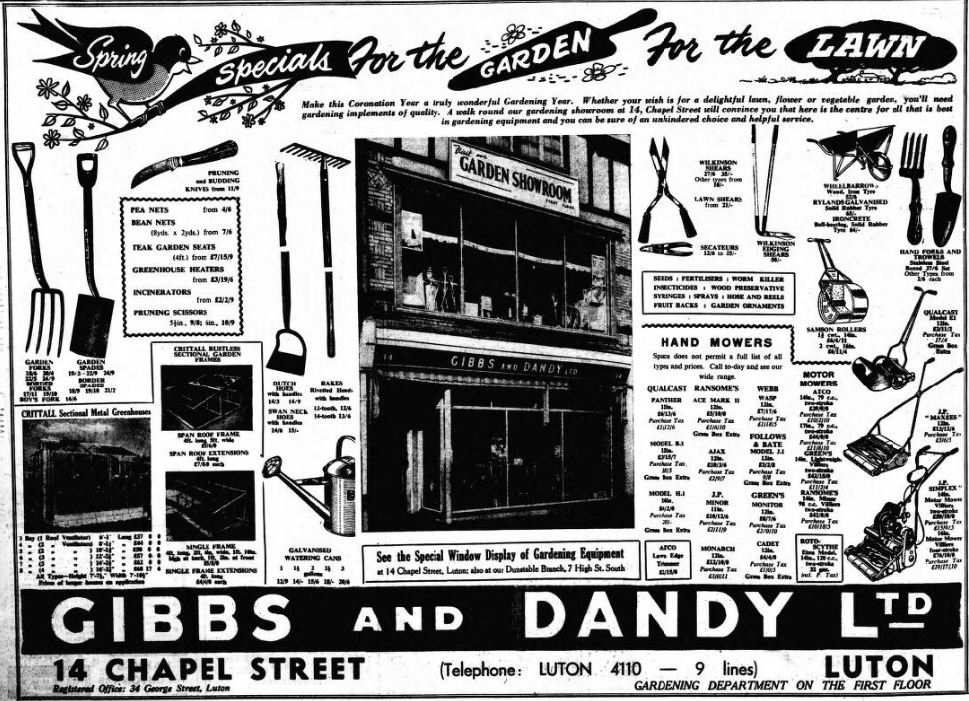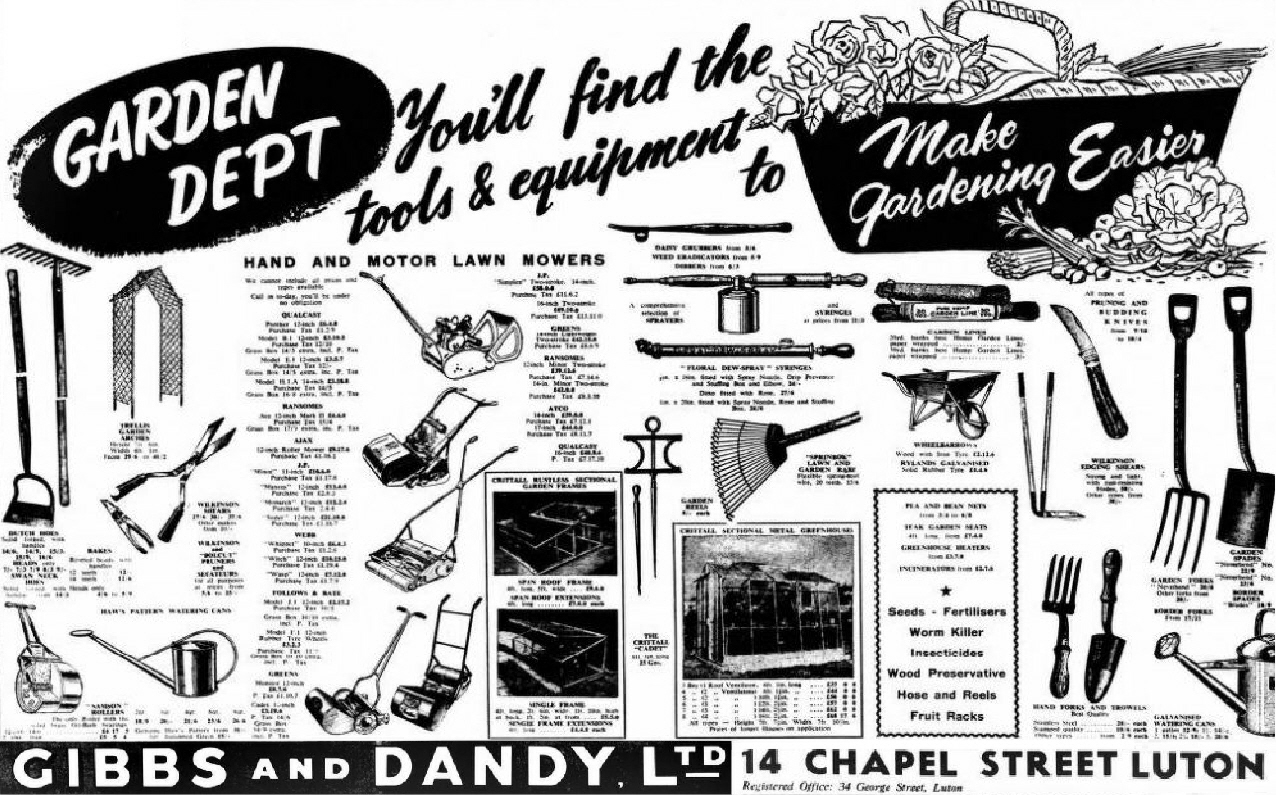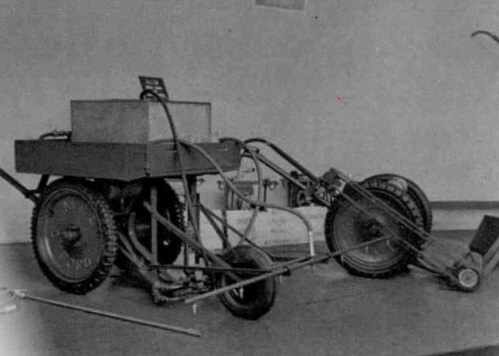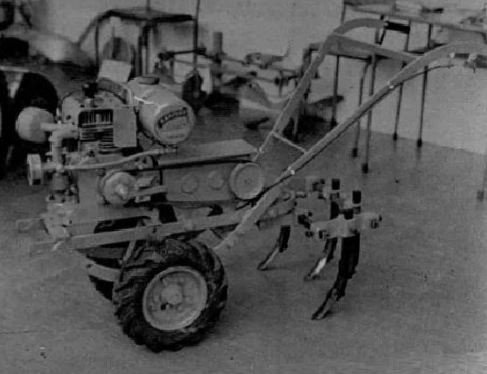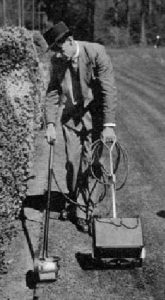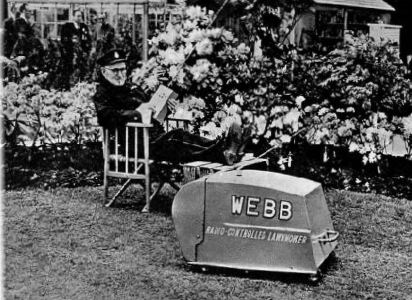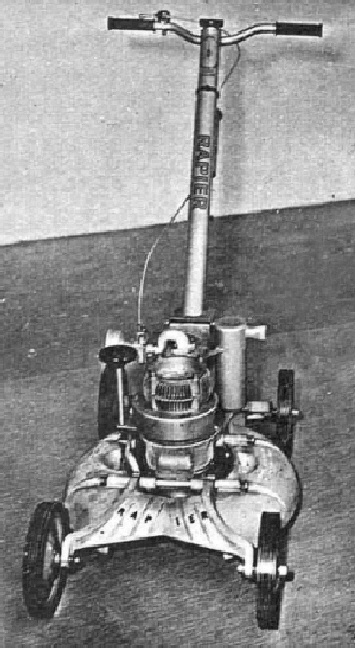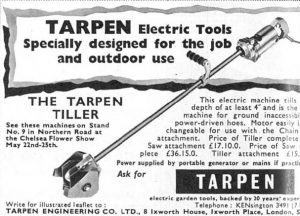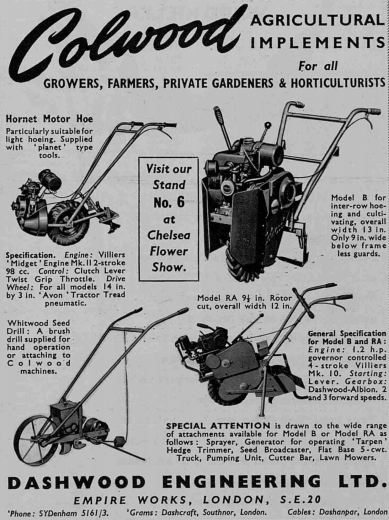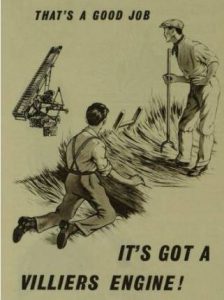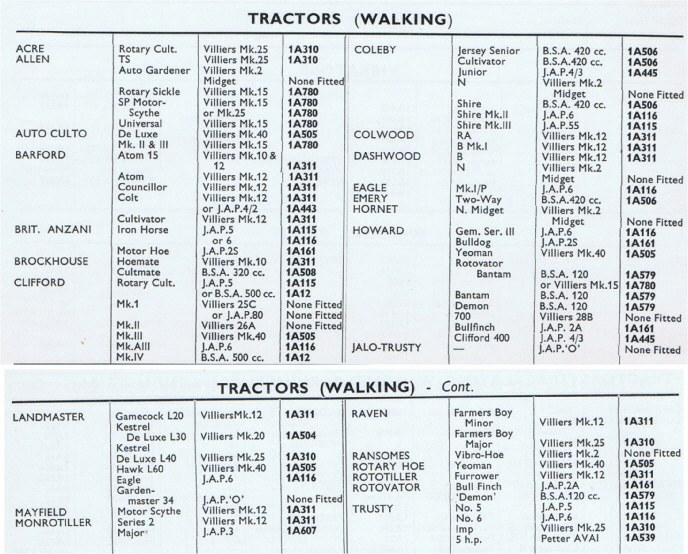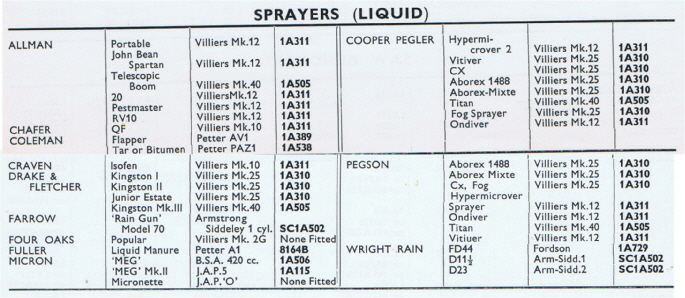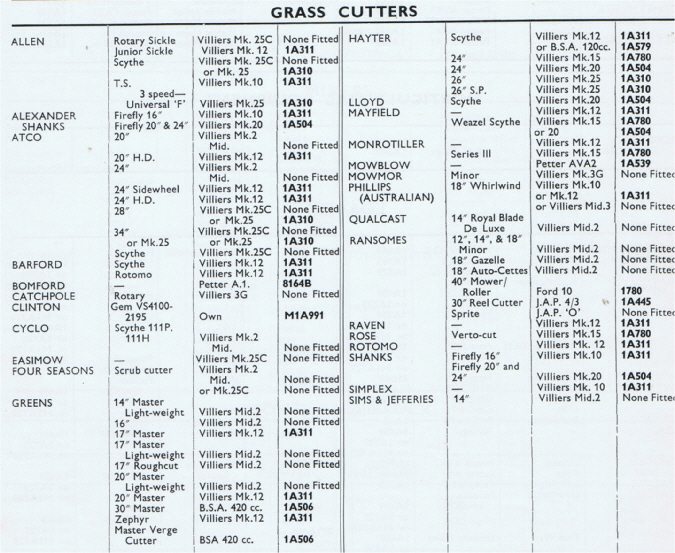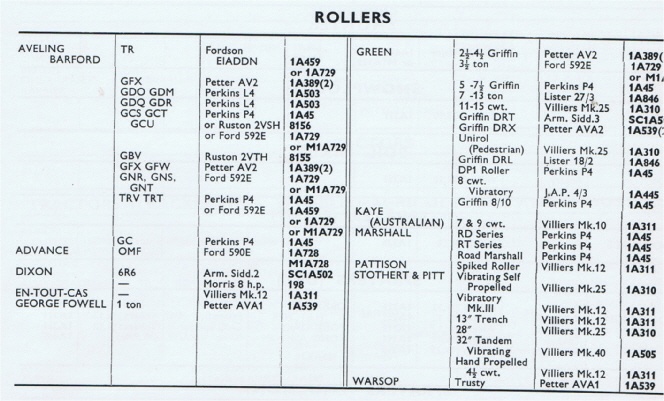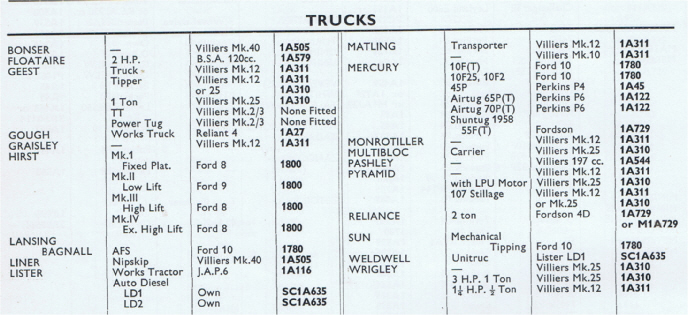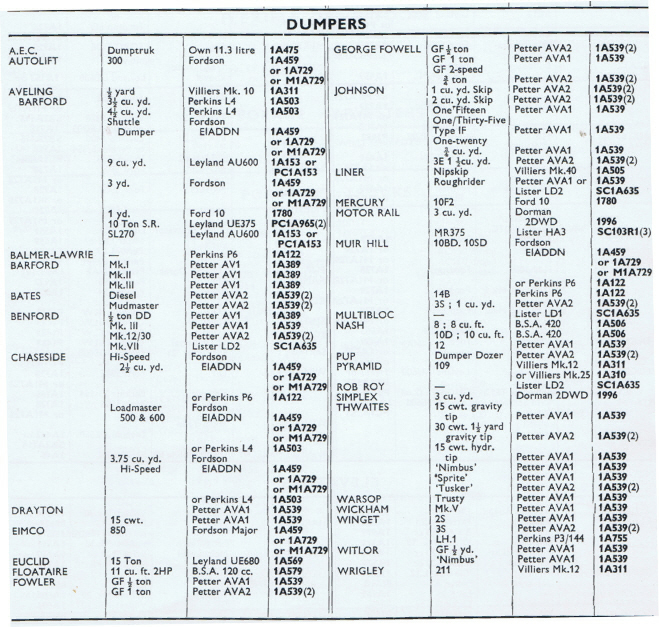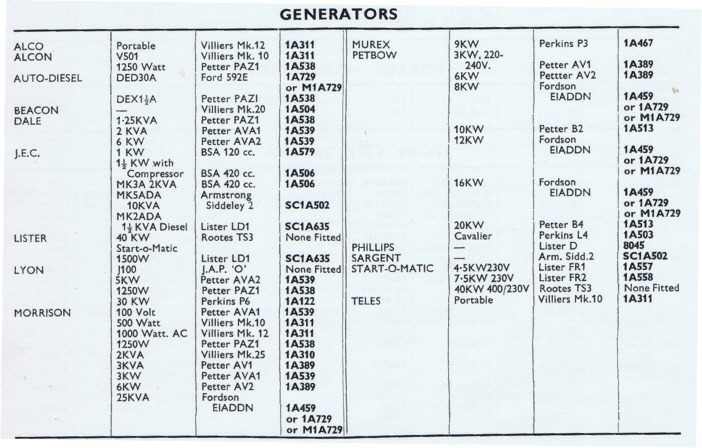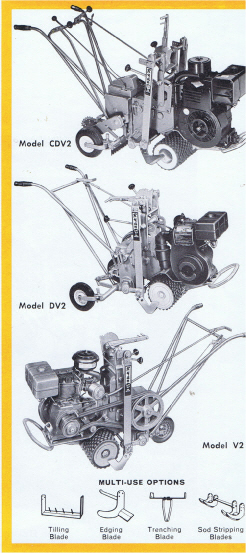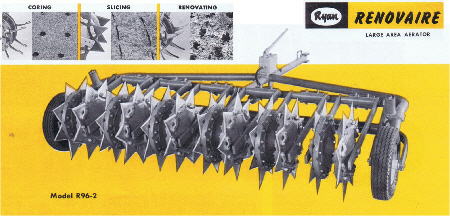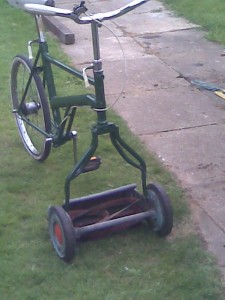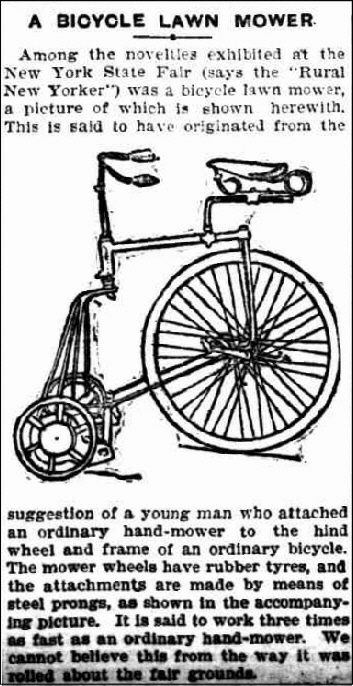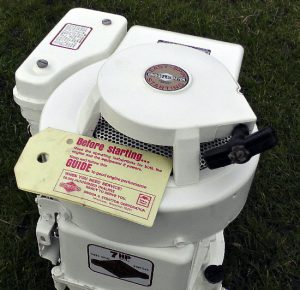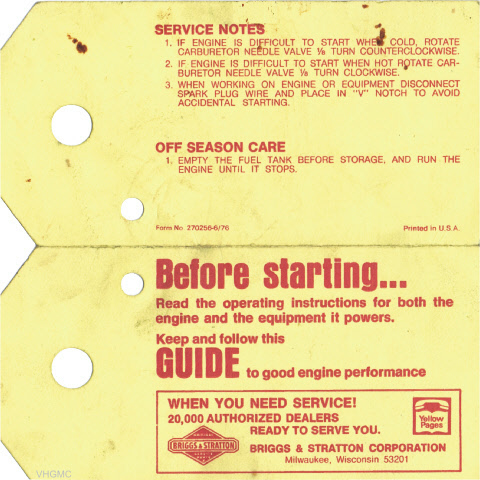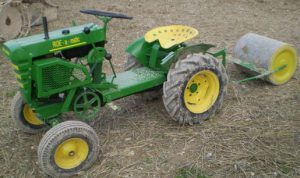
Bolens Ride-a-matic
This isn’t a trick question but does anyone want to guess when Bolens introduced their
two-wheeled garden tractors to the UK?
We are all used to seeing the Bolens four-wheeled garden tractors, as in the image on the right, with the appealing Ride-a-matics being introduced in 1959, but the
two-wheeled tractors were even earlier – in fact much earlier.
Newspaper research suggests that the very first Bolens were brought to the UK in September 1927, probably a couple of decades earlier than any of us would have guessed. Feedback from Bolens collectors suggest that it was originally thought that Bolens where not imported here before 1959, but newspaper adverts show the two-wheelers were here 32 years earlier.
Australia were four years earlier than us with a Bolens hitting their shores in 1923. Newspaper article at the bottom of this page.
In the UK, the book
Seventy Years of Garden Machinery describes early American machines but not that they were imported here, it mentions that two-wheel machines were first imported into the UK in the early 1960s but nothing before. (Admittedly it’s not an easy thing to find out)
Shown below is the very first UK Bolens advert known. It is from the Western Daily Press in Bristol dated 10th September 1927. It is an invitation for everyone to attend a Demonstration of the Bolen’s Tractor at the Agricultural & Horticultural Research Station, Long Ashton, Bristol on the 15th September 1927 at 2pm. That’s 90 years ago this year.

Bolens 1927 Advert – Possibly a Model A power hoe made 1921-1926?
Conveniently this is followed the next day by a report of the tractor and how it performed at the previous days demonstration.
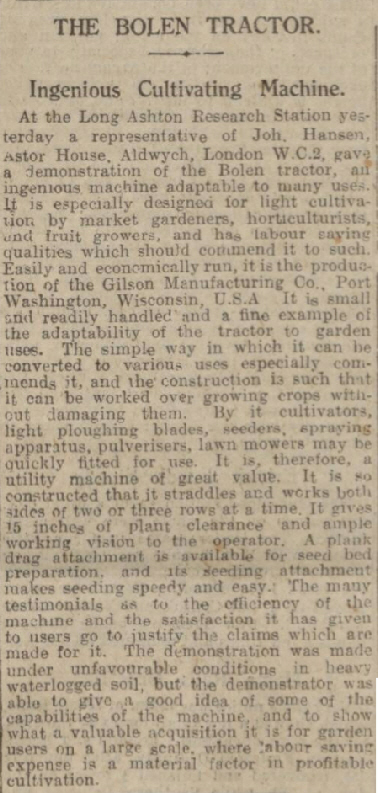
Bolens Tractor 1927 Report from Long Ashton, Bristol.
The advert from 16th September 1927, image right, says:
“Ingenious Cultivating Machine. At the Long Ashton Research Station yesterday a representative of Joh. Hanson, Astor House, Aldwych, London W.C.2. (Note: Joh. Hansen also imported other machinery from the USA including the 1930s Little Wonder hedge trimmer) gave a demonstration of the Bolen tractor , an ingenious machine adaptable to many uses. It is especially designed for light cultivation by market gardeners, horticulturalists and fruit growers, and has labour saving qualities which should commend it to such.
Easily and economically run, it is the production of the Gilson Manufacturing Co. Port Washington, Wisconsin, U.S.A. It is small and readily handled and a fine example of the adaptability of the tractor to garden uses. The simple way in which it can be converted to various uses especially commends it, and the construction is such that it can be worked over growing crops without damaging them.
By it’s cultivators, light ploughing blades, seeders, spraying apparatus, pulverisers, lawn mowers may be quickly fitted for use. It is, therefore, a utility machine of great value. It is so constructed that it straddles and works both sides of two or three rows at a time. It gives 15 inches of plant clearance and ample working vision to the operator. A plank drag attachment is available for seed bed preparation, and it’s seeding attachment makes seeding speedy and easy. The many testimonials as to the efficiency of the machine and the satisfaction it has given to users go to justify the claims which are made for it.
The demonstration was made under unfavourable conditions in heavy waterlogged soil, but the demonstrator was able to give a good idea of some of the capabilities of the machine, and to show what a valuable acquisition it is for garden users on a large scale, where labour saving expense is a material factor in profitable cultivation.”
And then…..nothing……absolutely nothing about Bolens until 14 years later when an advert appears in the Gloucestershire Echo on the 19th September 1941. Advertising a shipment of Bolen’s Market Garden Tractors complete with Ploughs, Potato raising ploughs and Cultivating Equipment. The distributors are B.S. Bird & Co. (Gloucester) Ltd. Does anyone know anything about B.S.Bird & Co. ?
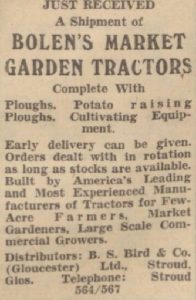
1941 Bolens as sold by B.S. Bird & Co (Gloucester) Ltd, Stroud.
This is followed (image below) on the 6th November 1942 by a private advert in the Western Mail selling a 5hp Bolens Tractor with complete ploughing and cultivating tools and potato lift – as sold in the 1941 advert above! The address is Rose Tree Farm , Llanmartin, South Wales. Importantly the price of £180 is mentioned for the purchase earlier that year.

1942 private advert for a 5hp Bolens Tractor
A couple of years later (image below) on the 16th February 1944, a Bolens tractor with implements appears in the Birmingham Mail. Advertised by Mason & Westcott, Pinvin, Pershore, Worcestershire for a price of £120 in as new condition.

1944 advert for a Bolens Tractor at Pershore, Worcs. Price £120.
Notice how these Bolens are so far all huddled around one corner of the UK and except for the advert below are within 60 miles radius of Long Ashton, Bristol?
On the 9th December 1948 an advert (image below) in The Cornishman newspaper advertises the sale of 2 Bolens tractors and implements.
Selling at public auction on the 10th December 1948 at Godolphin Cross, Breage, Helston, ‘Two-wheeled Bolens tractor with forward and reverse gears, complete with plough, cultivator, bankers, hay cutter, potato lifter, harrow (new): Two-wheeled Bolens tractor with forward and reverse gears, this tractor has scarcely done any work, complete with implements. Both tractors are fitted with flywheel ignition.’

1948 Bolens advert for two tractors with plough, cultivator, hay cutter, potato lifter and harrows
And then once again….nothing……nothing until the Ride-a-matics of 1959. This is the complete opposite of Trusty Tractors and other makes where private adverts pop-up often and in different places too, perhaps Bolens didn’t make an early impact and there weren’t many about? Any ideas?
In Australia a newspaper article appears in Adelaide on the 15th March 1924 – image below. Mr Archie McLean of Victoria had imported a Bolens Power Hoe nine months earlier (making it about June 1923). Mr McLean states that the machine cost £60 and 2/6 per day pays for the petrol.
Other Australian newspaper reports say that by May 1927 both the Bolens ‘D.J.” Power Hoe and the Bolens “Hi-Boy” tractor were available in Australia.
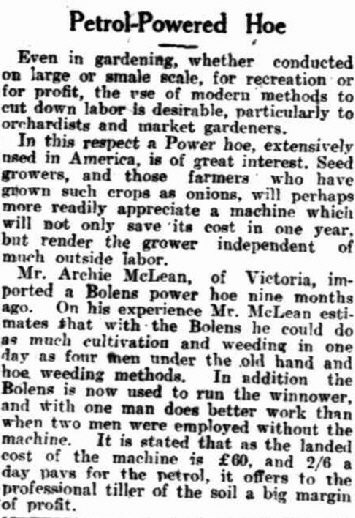
1924 Australian Bolens Power Hoe Article
Has anybody got, or seen, or heard of a 1920’s Bolens in the UK? Where did they go.
Thanks to Sandi & Roger for their help with identifying the 1927 Bolens picture in the first advert.
